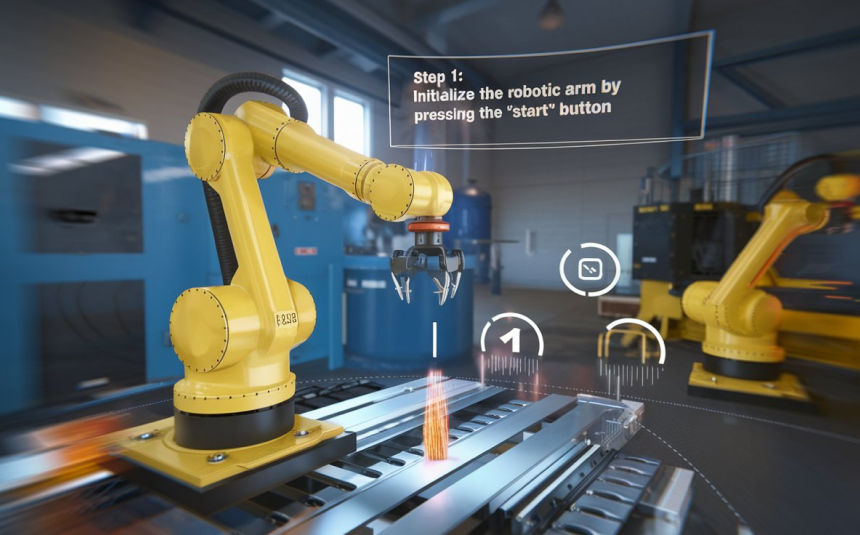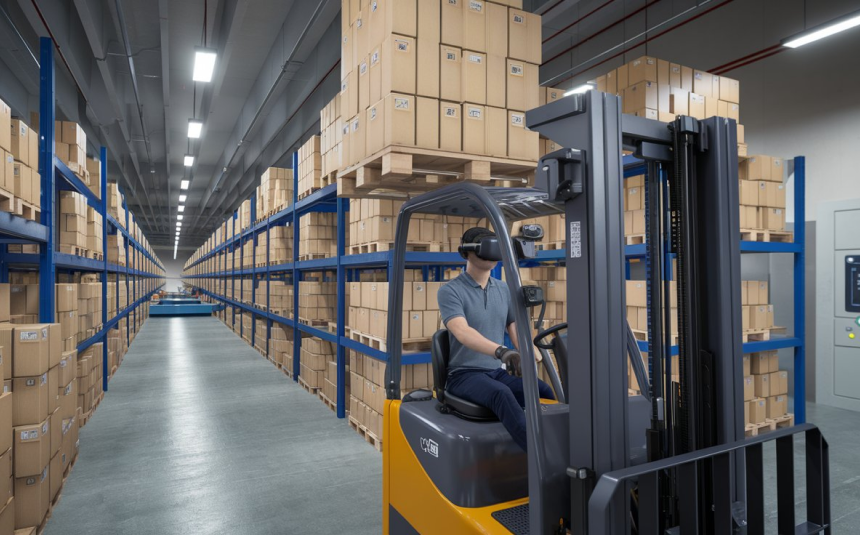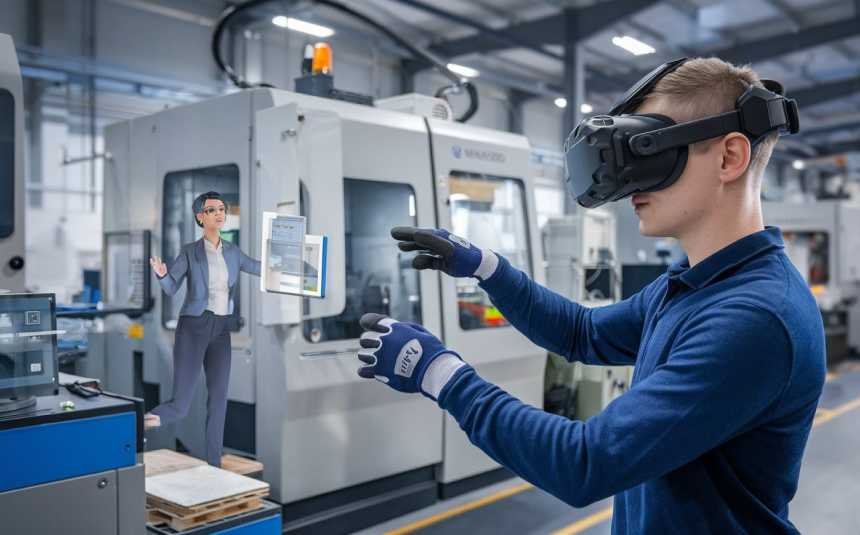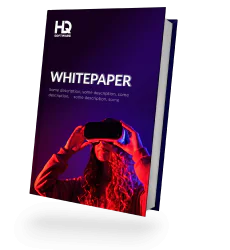What Is XR in the Context of Training?
Applications of XR in Workforce Training
Why Choose HQSoftware for Your XR Development
Industries Using XR Training for Workers
Benefits of Implementing XR Learning
Let’s face it: traditional training is often boring and ineffective, and it can be costly. Remember those long lectures where your mind wandered? Or the awkward, expensive simulations that didn’t quite replicate real-world situations? And what about employees who couldn’t attend because of their location or disability? One-size-fits-all training just doesn’t work for everyone.
But imagine this: engaging, interactive training that’s both safe and cost-effective. That’s the power of Extended Reality (XR) training.
In this article, I’ll explain how the XR learning fosters engagement, improves retention, and personalizes learning paths, empowering a more skilled and adaptable workforce. But first, let’s start with a definition.
What Is XR in the Context of Training?
Applications of XR in Workforce Training
Why Choose HQSoftware for Your XR Development
Industries Using XR Training for Workers
Benefits of Implementing XR Learning
Simply put, XR encompasses a spectrum of technologies that blend the physical and digital worlds to create immersive learning experiences. This includes:
XR’s immersive experiences and gamified elements capture your attention and help you truly learn. XR adapts to your learning style, focusing on your individual needs and progress. For example, with XR learning, a team of engineers can collaborate on a 3D model of a new product, making real-time annotations and adjustments from any location.
The result? Realistic scenarios without the real-world risks, which cuts down on travel and equipment costs and makes training accessible to everyone.
To illustrate the power of XR in workforce training, let’s examine some of the successful applications we’ve developed at HQSoftware.
Picture your employees mastering complex machinery or procedures without risking real-world consequences. XR simulations provide a safe and controlled environment for hands-on practice, allowing them to learn by doing and build confidence in their abilities.
For instance, we’ve developed an XR app for automated machinery training in manufacturing. The app provides workers with an immersive VR environment where they can practice operating advanced industrial machines. The training solution covers everything from routine maintenance to intricate repair scenarios, allowing employees to familiarize themselves with equipment and procedures before they ever touch the real machinery.
What is the result? A 30% increase in task accuracy and a notable reduction in the time needed to complete complex repairs.

Beyond technical prowess, XR learning can also cultivate essential soft skills like communication, teamwork, and problem-solving. This is particularly useful for roles that require customer interaction, negotiations, or public speaking.
In another XR project, the HQSoftware team worked with a field service company to create a VR solution focused on customer service training. These workers often found themselves in high-pressure situations where clear communication and conflict resolution were essential for maintaining client relationships. The VR scenarios we developed placed them in realistic simulations where they could practice handling difficult customer interactions, negotiating service terms, and resolving complaints.
Our client reported a 25% improvement in communication and collaboration, leading to more efficient cross-departmental workflows.

Workers can be exposed to simulated scenarios involving heavy machinery, hazardous materials, or extreme conditions without any real-world danger. Here XR can simulate emergencies such as fires, chemical spills, or natural disasters, allowing learners to practice their response strategies and improve their readiness.
At HQSoftware, we developed an XR safety training platform for a logistics company with a focus on forklift operation. Forklift accidents are a common issue in warehouses, and traditional training methods often fail to fully prepare operators for real-world hazards. Our VR solution created a fully immersive warehouse environment where employees could practice operating forklifts, navigating obstacles, and responding to emergency situations, such as load shifts or sudden equipment failures.
The result was a 45% reduction in forklift-related incidents within the first six months of implementation, as operators had already encountered and mastered these challenges in the virtual world.

XR can offer immersive virtual tours of the company, allowing new hires to explore the workplace environment, meet key team members, and understand the layout without being physically present. Through XR, new employees can experience the company culture, values, and mission in a more engaging and memorable way compared to traditional presentations.
Building on the potential of XR for employee onboarding, HQSoftware collaborated with a global tech company to create a tailored Virtual Reality solution. It introduced new employees to the company’s mission, values, and culture through an interactive and immersive narrative. The solution included virtual meet-and-greets with senior leadership, a tour of the company’s international offices, and interactive modules that allowed new hires to explore their role and the company’s impact on the industry.
The feedback from employees showed a 70% increase in engagement during the onboarding process, with many reporting that the VR experience helped them feel more connected to their new workplace from day one.

Whether you’re seeking to upskill employees with hands-on technical training or enhance soft skills through immersive scenarios with interactive VR and AR experiences, at HQSoftware we have the expertise to bring your vision to life.
Our approach is highly collaborative, ensuring that the XR solutions we develop align with your specific industry needs and business objectives. Here’s how we can help:
So, whether you’re in manufacturing, healthcare, or logistics, our XR solutions can be tailored to simulate any task or environment. XR may well be a practical solution for your business, because it’s already making a real difference in many industries. Let’s explore which industries are currently benefiting most from XR technology.
Need a custom software solution? We’re ready to help!HQSoftware has a team of skilled professionals ready to tackle the project. Ask me!
Natallia Rudzik
Business Development Manager
XR isn’t just a trend; it’s about empowering workers with the skills they need to succeed, safely and efficiently. In my opinion, XR offers significant advantages for complex industries requiring safe training environments to mitigate risks.
| Industries | How it works |
| Industrial sector | XR training for industrial workers provides a risk-free virtual training ground, allowing trainees to practice complex tasks repeatedly until they master them, all without the risk of injury or equipment damage. It’s like having a personal, expert instructor guiding you every step of the way, no matter your learning style. |
| Manufacturing sector | XR solutions for manufacturing training streamline complex assembly processes. Instead of struggling with confusing instructions, an employee can use AR overlays to see exactly where each part goes, guided by interactive 3D models. This speeds up training, reduces errors, and boosts productivity. It’s personalized learning at its best, adapting to your individual pace and needs. |
| Energy sector | Working in the energy sector often involves complex equipment and potentially hazardous situations. XR provides a safe and realistic environment to practice crucial tasks like pipeline maintenance or power plant operations. You can learn to handle emergencies and troubleshoot problems without risking real-world consequences, improving safety and efficiency. It’s personalized training that adapts to the unique challenges of the energy industry. |
For a comprehensive picture, let’s explore the main advantages of incorporating Extended Reality for training into your business strategy.
Forget the limitations of traditional methods – XR learning offers a training experience with benefits that extend far beyond the classroom. Here are some of the advantages that create the most impact:
To sum up, I can say that XR learning allows learners to access training from anywhere, at any time, making it easier to reach remote or hard-to-reach learners.
But let’s be realistic: implementing Extended Reality training isn’t a simple switch-flip. While the benefits are immense, there are some hurdles to overcome.
Considering custom software?HQSoftware’s team of experts can design and develop the perfect solution for your business. Let’s discuss it
Dmitry Tihonovich
Business Development Manager
As you consider implementing XR, you may face several challenges that can affect the success of this initiative. Let’s talk about a few key hurdles:
Setting up an Extended Reality training program requires an upfront investment. This includes purchasing headsets, software, and potentially specialized equipment, as well as the costs associated with developing the training content itself. It’s a big commitment, but remember to consider the ROI – reduced training costs, improved safety, and increased productivity.
Issues like latency (the delay between actions and responses), field of view (how much of the virtual world you can see), and headset comfort can affect how users experience and benefit from training. It’s important to choose the right technology and development partner to mitigate these challenges.
Even with the best technology, successful XR learning hinges on user acceptance. Some individuals may experience discomfort or motion sickness when using VR headsets, while others may be hesitant to embrace new technologies. Proper training on how to use the equipment and creating intuitive content are crucial for overcoming these barriers.
I think implementing XR training requires careful planning and consideration, but the potential benefits far outweigh the challenges. By addressing these issues proactively, you can create a more effective learning environment for your workforce.
How do modern businesses use AR to increase their revenues and outperform their industry competitors?

The world of XR training is buzzing with exciting developments, and it’s only going to get more immersive and impactful. Here’s a sneak peek at what’s on the horizon:
If you want to stay ahead in the curve of corporate training, connect with our experts. Whether you want to boost hard and soft skills development, or create immersive learning experiences, we can help.
Let’s connect and discuss how we can help you achieve your training objectives.

HQSoftware Founder
Having founded the company in 2001, uses his broad knowledge to drive the company forward. Ready to share his wisdom on software development and technology insights
We are open to seeing your business needs and determining the best solution. Complete this form, and receive a free personalized proposal from your dedicated manager.

Sergei Vardomatski
Founder